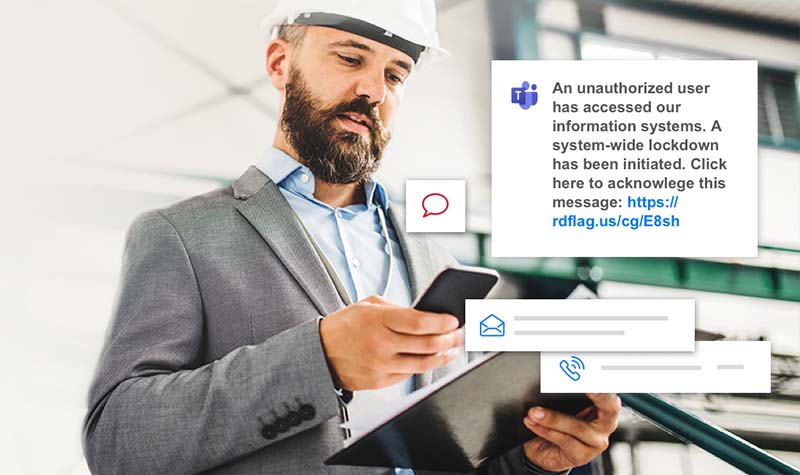November 17, 2021 Posted by Pocketstop in Crisis Communications, Internal Communications Social Share
One of the most proactive steps you can take in your business is to create a safety culture. Building a plan behind a safety message that is relevant for every emergency situation shows your staff you place workplace safety high on the priority list, which will motivate employees to follow it and stay safe. It is critical to integrate safe work practices and regularly educate your staff on how to conduct and protect themselves in an emergency situation. Be sure to listen to all of your staff’s safety concerns and questions, and if you have enough staff, form a safety committee to deal with related issues.
Most importantly, educate your staff in advance, based on your crisis communication plan. This way, they can better understand and follow your emergency messages if and when the time comes.
Office Safety Strategies
Here are some strategies (specifically for office safety) that you can implement so that your staff can stay safe and avoid or reduce emergencies.
- Be aware. Know your area, and consider what could possibly go wrong in the future. For example, there could be a loose wire that could start a fire or an obstruction on the floor that could cause people to fall. While you’re looking up, be aware of strangers or suspicious characters.
- Make sure your staff knows how to report an emergency quickly and effectively. Have a safety meeting. Review procedures and perform regular drills.
- Know and share safety procedures. When a new piece of equipment enters the office, share the procedures that will endorse safety and not cause accidents or fires. While you’re at it, make sure everybody in the office knows how to locate and operate a fire extinguisher.
- Keep exits clear. Hallways and stairs should always be clear of debris and obstruction. They should be the quickest and easiest routes for escape. Following this rule could save lives.
- Get clean. Make sure anything flammable is cleared away, spills are cleaned, and slippery spots are eliminated.
Employee Safety Message Considerations
When writing your safety messages for employees, keep these considerations in mind:
- Keep it short. Too many words may confuse your staff or they may not be motivated to read through it.
- Keep it simple. Just get right to the point, maybe two or three sentences at the very most, containing clear instructions.
- Keep it relevant. Make sure your messaging is up to the moment, ready to be understood in the present. This is where it helps for your staff to be aware in advance of possible risks, danger areas, and injury possibilities. Separate relevant people in groups so you can increase relevancy. For example, segment employees based on which building they work in or specific regions. This allows you to send targeted messages to directly effected employees differently that the rest of the company.
- Keep it positive. Have a good attitude and don’t scare or panic your staff. Focus on solutions, first responders, and those who can help. In short, don’t be negative.
- A picture is worth a thousand words. If you can show quick videos, an image that describes the situation, or a visual escape route, that will convey more information (and be understood) in less time.
- Gather feedback. To gather insight into the developing crisis, send an acknowledgement request or poll to employees know who has been effected, what is their status, and the needed response.
Invest in a mass notification system that best helps you communicate your safety message for employees.
The emergency mass notification platform you use to send your safety message for employees should make your job easier at every moment of the emergency, and even beforehand. Your messages should be sent in real time, and be easy to read and follow by your staff. You should be able to stay in touch with your staff, message them when necessary, and be able to reach them on any platform or device they are using. The company you choose should offer dependable, competent customer support 24/7, and be protected by the very best security.
Consider these features when planning your emergency message for employees:
- Proactive functions: like being able to program in your staff’s contact information in advance — and how they are to receive their emergency messages (for instance, ask them if they prefer getting texts, emails or voicemails)
- Two-way chat
- Polling (taking a head count or finding out how people are)
- Alerting your local fire department and/or first responders (you can program this information ahead of time)
Bottom line:
Before you share any emergency safety messages, make sure your staff is prepped, rehearsed and knowledgeable about what may go down in any emergency situation. Your communications should be short, to the point, and easy to understand.
Work safely!
Find out more about how RedFlag can help you with your safety message for employees. Click here.
The National Safety Council (NSC) shares a lot of good information about workplace safety topics. Check it out here.
—–
Social Share


